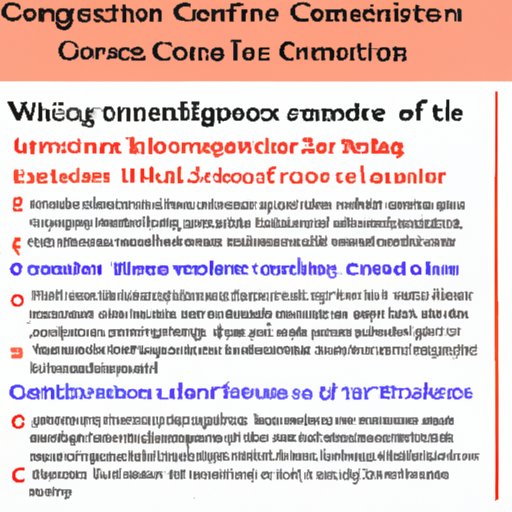Introduction
Writing conventions refer to the agreed-upon rules of writing. They define the accepted standards for written communication, including grammar, punctuation, syntax, spelling, and formatting. Understanding and adhering to writing conventions can help writers create clear and effective communication.
A Guide to Writing Conventions: What They Are and How to Use Them
Types of Writing Conventions
Writing conventions include a variety of different rules and guidelines. These conventions vary depending on the type of writing and the audience. For example, academic writing often requires more formal conventions than creative writing. In general, writing conventions can be broken down into three main categories: grammar and spelling, formatting, and naming conventions.
Naming Conventions for Writers
Naming conventions are the rules for assigning names to documents, files, folders, and other digital items. Naming conventions make it easier for readers to find and identify documents. For example, a writer might assign a specific file name to all drafts of their articles, such as “ArticleName_Draft1” or “ArticleName_FinalDraft.” This helps the writer quickly locate their work when needed.
Grammar and Spelling in Writing Conventions
Grammar and spelling conventions refer to the rules of language. Grammar includes the structure of sentences and the parts of speech, such as nouns and verbs. Spelling refers to the correct spelling of words. Adhering to these conventions helps ensure that readers can understand written messages. The most commonly used grammar and spelling conventions come from English, but many other languages have their own conventions as well.
Formatting in Writing Conventions
Formatting conventions refer to the way text is presented on the page. This includes things like font size, line spacing, margins, indentations, and alignment. Formatting conventions help define the overall look and feel of a document and make it easier for readers to navigate. For example, headlines and subheadings should be larger and bolder than body text.

How to Incorporate Writing Conventions into Your Writing Process
Benefits of Adhering to Writing Conventions
Adhering to writing conventions can help writers communicate clearly and effectively. It also makes it easier for readers to understand written messages and helps writers create a professional image. By following writing conventions, writers can ensure that their work is consistent and error-free.
Steps to Take When Applying Writing Conventions
To incorporate writing conventions into your writing process, start by researching the conventions that apply to your particular type of writing. Make sure to follow the conventions for grammar, spelling, formatting, and naming. As you write, double check your work to make sure you are adhering to the conventions. Finally, consider having someone else review your work to make sure you haven’t missed any mistakes.
Conclusion
Writing conventions are the agreed-upon rules of writing. They include conventions for grammar, spelling, formatting, and naming. Adhering to writing conventions can help writers create clear and effective communication. To incorporate writing conventions into your writing process, research the conventions that apply to your type of writing, double check your work, and have someone else review your work.
(Note: Is this article not meeting your expectations? Do you have knowledge or insights to share? Unlock new opportunities and expand your reach by joining our authors team. Click Registration to join us and share your expertise with our readers.)
